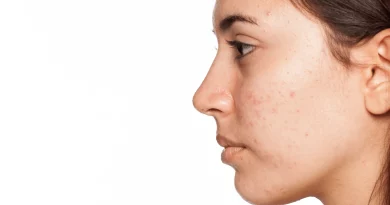Do Scalp Tattoos Affect Hair Growth
Many people experience balding and hair thinning as they age, so they seek natural-looking solutions to maintain their hairline. A hair or scalp tattoo is an affordable and long-lasting solution for someone experiencing hair loss. During the procedure, scalp micropigmentation (SMP) experts add small amounts of pigment to the balding areas, creating the illusion of buzz-cut hair and restoring the look of a natural hairline
Will SMP Promote Hair Growth?
The outcome of your SMP procedure will include visible spots on your scalp resembling hair follicles. While SMP outcomes create the look of a buzz cut or short, evenly distributed hair stubble, the procedure does not affect hair growth. Your hair will continue to grow the same way it did before the SMP treatment.
Scalp micropigmentation needles do not reach hair follicles since they only go up to 2mm deep. This means your follicles remain intact, so the scalp tattoos do not get in the way of hair growth.
Scalp micropigmentation artists also use pigments different from regular tattoo ink. The SMP pigments emulate your natural hair color for more authentic results. SMP pigments do not have chemical compounds that can inhibit natural hair growth, so your hair will grow the way it did prior to treatment. The main difference will be that previously bald spots will have the appearance of small, short hair follicles.
Can I Experience Slow Hair Growth After SMP Treatment?
You might experience slow hair growth after scalp micropigmentation, but this is not linked to the procedure. Hair growth and development often speed up or slow down as part of your hair growth cycle.
The normal hair-production cycle has three phases determining how fast your hair grows. They include:
Anagen Phase
The anagen phase is the initial phase of hair development and is the most active. Your hair follicles grow continuously within this phase, with cells at the hair root dividing rapidly. Active hair follicles continue to push out hairs that have reached the end of their lifespan.
This phase of hair growth can last about three to five years, depending on your type of hair. The position of your hair also determines how long the strands develop. For example, hair follicles closest to the central areas of your scalp develop earlier than those closer to your hairline.
Catagen Phase
During the catagen phase, hair growth slows, and your follicles shrink. It marks the end of the hair growth cycle, where most hairs will separate from your follicles. The catagen phase is transitional and often lasts about ten days.
Telogen Phase
The telogen phase, also the resting phase, represents a time in the cycle when your hair does not grow. During this phase, full-grown hair does not fall out either; healthy hair stays in place to cover the scalp.
The telogen phase lasts between three to four months, within which new hairs start to form within the same follicle. While your follicles might be resting during this phase, some cellular activity allows cells to regenerate more hair.
Exogen Phase
The exogen is the final phase of your hair cycle, also called the shedding phase. While the exogen phase might seem like an extension of your telogen phase, most of the old hair is shed during this period. You can help shed such hair through brushing and washing, leaving new hair in place. This phase lasts between two to five months.
Different follicles can go through each of the phases at distinct times. This can affect your hair growth after getting scalp tattoos. While you may want to retain long hair, a buzz cut can help you achieve better-looking results after SMP treatment.
Boosting Hair Growth After SMP Treatment
Multiple factors affect average hair growth, including hormone levels and genetics. While such factors are beyond your control, you can manage others to improve hair growth. Some ways you can boost hair growth after an SMP procedure include:
- Proper Nutrition: Your diet can influence hair growth. Hair comprises mostly proteins, so you should include healthy protein foods like fish and lean meats to boost hair growth.
- Hair Care: Specialized hair products can promote healthy hair growth. Pay attention to how you wash your hair and how it reacts to proper care. Practices like avoiding heat damage when washing can help prevent hair loss.
- Reduced Stress: According to experts, stress levels influence a person’s hair loss and ability to grow healthy hair. Consider different de-stressing methods for healthier hair and better overall health.
Enjoy Natural-Looking Results With Scalp Tattoos
Scalp micropigmentation is the ideal long-term, affordable solution for people experiencing hair loss. SMP practitioners create a scalp tattoo that resembles growing follicle hair on your scalp. While SMP does not affect hair growth, this technique helps people with partial baldness, thinning hair, or a receding hairline enjoy authentic-looking results.




